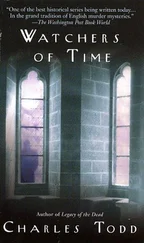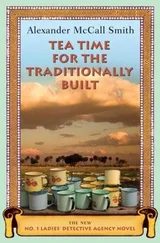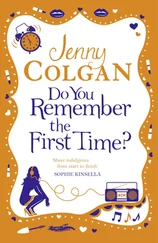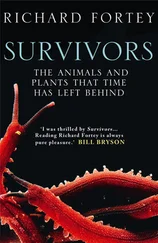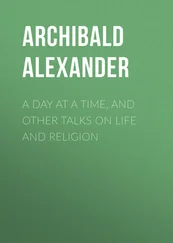Alexander Todd - A Time to Remember
Здесь есть возможность читать онлайн «Alexander Todd - A Time to Remember» весь текст электронной книги совершенно бесплатно (целиком полную версию без сокращений). В некоторых случаях можно слушать аудио, скачать через торрент в формате fb2 и присутствует краткое содержание. Город: Cambridge, Год выпуска: 1983, ISBN: 1983, Издательство: Cambridge University Press, Жанр: Химия, Биографии и Мемуары, на английском языке. Описание произведения, (предисловие) а так же отзывы посетителей доступны на портале библиотеки ЛибКат.
- Название:A Time to Remember
- Автор:
- Издательство:Cambridge University Press
- Жанр:
- Год:1983
- Город:Cambridge
- ISBN:0 521 25593 7
- Рейтинг книги:3 / 5. Голосов: 1
-
Избранное:Добавить в избранное
- Отзывы:
-
Ваша оценка:
- 60
- 1
- 2
- 3
- 4
- 5
A Time to Remember: краткое содержание, описание и аннотация
Предлагаем к чтению аннотацию, описание, краткое содержание или предисловие (зависит от того, что написал сам автор книги «A Time to Remember»). Если вы не нашли необходимую информацию о книге — напишите в комментариях, мы постараемся отыскать её.
A Time to Remember — читать онлайн бесплатно полную книгу (весь текст) целиком
Ниже представлен текст книги, разбитый по страницам. Система сохранения места последней прочитанной страницы, позволяет с удобством читать онлайн бесплатно книгу «A Time to Remember», без необходимости каждый раз заново искать на чём Вы остановились. Поставьте закладку, и сможете в любой момент перейти на страницу, на которой закончили чтение.
Интервал:
Закладка:
Back in Cambridge, things were very much on the move. Thanks to Ralph Gilson's efforts, the University Chemical Laboratory had undergone a remarkable transformation; all the anachronisms like gas lighting had gone, laboratories had been remodelled and re-equipped, library, stores and other services had been enlarged and completely reorganised, and a totally new spirit of confidence and enthusiasm pervaded the school. The flood of overseas and of British doctoral and postdoctoral students seeking to join us kept growing to the point of embarrassment and we had indeed to commandeer some of our teaching accommodation to cope with it. By 1948 we had - in addition to British - Australian, New Zealand, Polish, German, Spanish, Indian, Canadian, South African, American, Chinese and Singhalese students, all forming a closely knit group and all working productively. Socially the laboratory was a good outfit too. We used to have a joint cricket team with the technical staff which played for some years in the Cambridgeshire Cricket League, and, in this and other social and sporting activities, there was no distinction made between the most junior laboratory assistant and the professor. My work was increasingly attracting the attention of biochemists, especially in America, where biochemistry teaching was much more grounded in chemistry than it was (at the time) in Britain; indeed, at the time of the International Congress of Biochemistry held in Cambridge in 1949 I remember being approached by a number of American participants, including Carl and Gerty Cori, to persuade our biochemists to get closer to American practice, which seemed to produce much better research schools! There was quite a ferment in Britain at that time about the relationship which should exist between chemistry and biochemistry, and I was viewed with quite unjustified suspicion by leading British biochemists, because I was unable to regard organic chemistry and biochemistry as totally distinct disciplines with fixed boundaries. It was about this time, incidentally, that a young American biochemist came to my laboratory as a postdoctoral fellow and, on introducing himself to me, said ' Professor, I have come to you to be saved.' Some thirty years have passed since then, and it has given me, at least, the greatest pleasure to see the change of heart from those days - a change which has brought chemistry and biochemistry much closer to one another to their mutual benefit.
While in Chicago, and indeed for some time before that, I had been subject to rather tiresome bouts of indigestion and early in 1949 matters came to a head rather suddenly, and I had to undergo major surgery for removal of my gall-bladder which was completely blocked by a large lump of beautifully crystalline cholesterol. The Dyestuffs Division Research Panel of Imperial Chemical Industries Ltd used to meet on the first Friday in each month at Blackley Works, Manchester, and its three external members - Robert Robinson, Ian Heilbron and myself — used to travel from London by rail on the evening before and stop over at the Midland Hotel in Manchester. When I had recovered from the gall-bladder operation sufficiently to go up again to a Panel meeting, I found myself travelling up on the evening train with Robert Robinson. Robinson, my former teacher and now a close friend, had, as one of his more endearing characteristics, a habit of reacting emotionally and almost violently at times to comments on chemical matters which were brought suddenly to his notice. At the time of which I am writing, he was in the throes of his large-scale effort to synthesise cholesterol - a rather fashionable pursuit which then occupied a number of competing groups throughout the world. Robert proceeded to recount to me that evening a particularly nasty snag that was blocking his path. After we had discussed it for a bit I said 'I'm sorry you are having difficulties - I don't suppose you know it, but I have just completed a synthesis and isolated cholesterol absolutely correct in structure and stereochemical configuration.' He rose to the bait like a trout to the mayfly, and almost shouted 'What do you mean? Why was I not informed that you were working on cholesterol? How long has this been going on?' I replied 'Don't worry, Robert, it's just a little something I did entirely on my own in my spare time' - and with that produced my beautiful gallstone, which I was carrying in my waistcoat pocket. Robert's wrath vanished as quickly as it had come, and was replaced with a roar of laughter; when we got to Blackley next day, I heard him recounting my successful synthesis to all and sundry.
In the summer of 1949 I received my first honorary degree - Doctor of Laws - from the University of Glasgow. I was deeply touched, for not only was it my first academic honour, but it was bestowed by my own university where I began my career. Just a year later I received a second - the honorary degree of Dr. rer. nat. from the University of Kiel. This I also esteemed greatly, since it was bestowed, I suspect, partly in recognition of what I had done for the German universities, and especially for German chemistry, in the dark days just after the war. The spring of 1950 was also the occasion of a hilarious visit to Spain, with Harry Emeleus, to celebrate the 10th Anniversary of the Consejo Superior de Investigaciones Cientificas (of which body we were both Consejeros de Honor). The celebrations were on a lavish scale, but two particular functions were especially memorable. The first was the commemorative act in Madrid where the handsomely bound volumes containing the work of each of the numerous institutes of the Consejo were presented to General Franco. This was held in a large hall fitted up with floodlights trained on a platform on which was a long table with a reading desk in the centre and a semicircle of chairs behind it. We were all assembled in good time, and were kept amused by the efforts of the electricians who were clearly having trouble with their lighting arrangements. About half an hour after the advertised time for the ceremony the Caudillo and his cabinet - all in magnificent white uniforms - arrived in a fleet of cars, flanked by an escort of about a hundred soldiers or police on motor-cycles. The bands struck up, and Franco and his ministers processed into the hall. Unfortunately, just as the floodlights were turned on the main fuse blew, and for a minute or two chaos supervened. When they were turned on again, all the white uniforms had got on to the platform, but the effect was rather spoiled by the fact that some of the ministers seemed to be waving to friends in the audience, the main spotlight was slightly off-centre, and the platform was swarming with photographers all pushing and jostling to get a good picture of the Caudillo. It was all rather like a comic opera version of a Nazi rally. Order was finally restored, the Caudillo took up his stance at the reading desk, and, one by one, the institute directors came forward, each with one or more attendants bearing stacks of books which were deposited on the table in front of the General. Now, Franco was not very tall and the pile of books grew rapidly - so much so that by the time we were about half way through the ceremony, Franco could no longer be seen from the part of the hall in which I was seated; it really was a hilarious meeting. The second highlight of the Consejo celebrations was the excursion to Segovia. I do not think General Franco himself was there - at least I do not recall seeing him - but quite a substantial number of his ministers took part. We were all loaded into large black cars in Madrid, and drove in procession to Segovia. All along the route, at intervals of about a kilometre, there were pairs of civil guards who presented arms. When we got to Segovia we were received by the provincial governor and the mayor, and drove up to the Alcazar which had been specially beflagged for the occasion. On alighting, we entered the great courtyard, each being presented on the way in with an alforja (a kind of brightly coloured saddle bag) containing in one pocket a sheep's milk cheese, and in the other some bread, a knife, and a glazed earthenware jug of about a pint capacity. The reason for this was soon apparent. Along two sides of the courtyard were rows of sucking pigs roasting gently on spits, and on the third were skins of wine suspended over large horse or cattle troughs. The centre of the courtyard was occupied by troupes of regional dancers from different parts of the country. The wine skins were slashed, the dancers danced, and we all got busy on the wine and bread and cheese. I suppose this went on for about half an hour, by which time all inhibitions had been removed, and we all tottered (literally) into the great hall where lunch - vast quantities of barbecued sucking pig and still more wine, was consumed. Thereafter, we got back into our cars, and slept peacefully until we arrived at the Escorial where, believe it or not, we were met with copious draughts of brandy. My recollections of the rest of the trip back to Madrid are a bit hazy.
Читать дальшеИнтервал:
Закладка:
Похожие книги на «A Time to Remember»
Представляем Вашему вниманию похожие книги на «A Time to Remember» списком для выбора. Мы отобрали схожую по названию и смыслу литературу в надежде предоставить читателям больше вариантов отыскать новые, интересные, ещё непрочитанные произведения.
Обсуждение, отзывы о книге «A Time to Remember» и просто собственные мнения читателей. Оставьте ваши комментарии, напишите, что Вы думаете о произведении, его смысле или главных героях. Укажите что конкретно понравилось, а что нет, и почему Вы так считаете.

